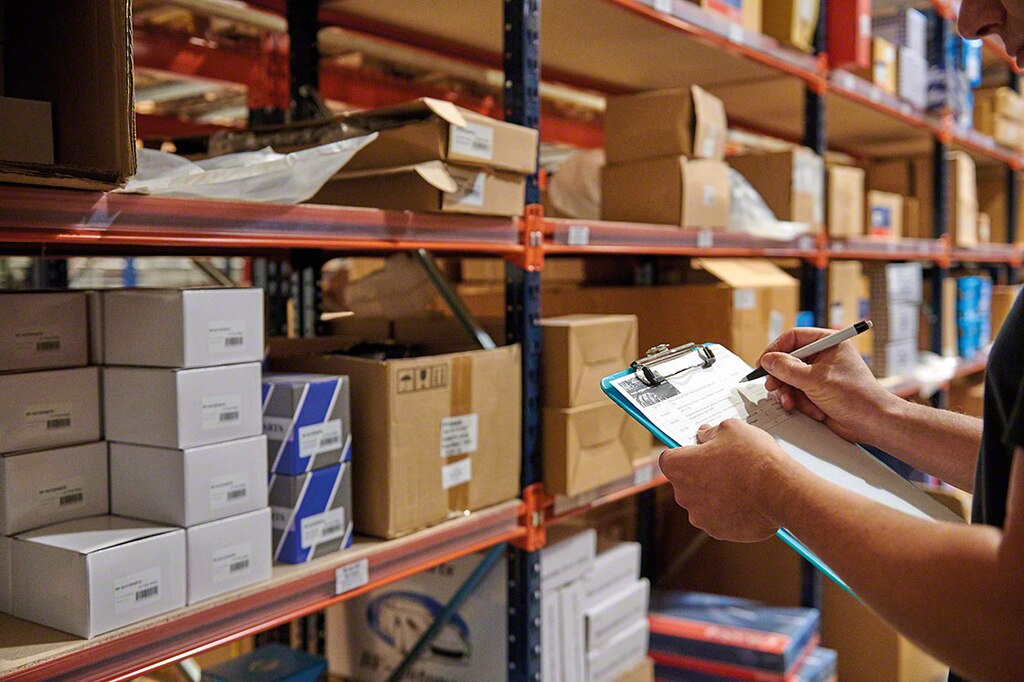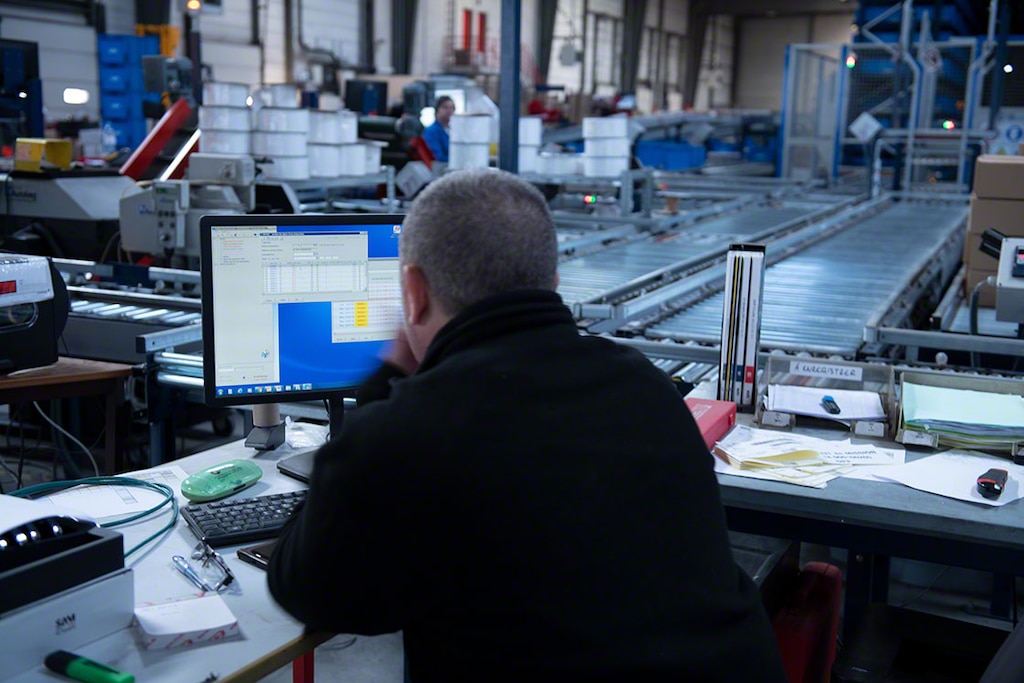
Inventory management: the cornerstone of the warehouse
Inventory management is a warehouse operation comprising management of product records and goods procurement and dispatch. Inventory includes all tangible assets used by a company to manufacture products or satisfy customer demand.
It constitutes one of the most critical operations of any organisation, as it affects the other activities carried out in the facility. Businesses should maintain minimum stock levels to guarantee service in the event of an unexpected rise in demand or a procurement issue. This prevents interruptions to production processes or order picking.
In this post, we explain what inventory management is, its importance, and the most common methods for controlling a company’s products in its warehouse.
What is inventory management?
The inventory management process consists of organising and controlling the set of products a company stores in its facility.
By products, we’re referring not only to raw materials, semi-finished goods, and finished products, but also to the different types of packaging, spare parts, and accessories that a business consumes day-to-day.
To manage all this inventory appropriately, it’s necessary to control product inflows and outflows in the warehouse. Likewise, it’s necessary to define the quantity of items required to respond to demand and the point at which these goods should be replenished.
Inventory management: why it’s so crucial
Inventory management is fundamental for properly organising the facility and properly undertaking all the activities that make up the supply chain.
Maintaining adequate stock levels streamlines operations. Plus, it facilitates the transportation and distribution of the products, improving customer service. The decline in errors and returns and, thus, increase in customer satisfaction are priorities for any company.
Thanks to inventory management, the organisation accounts for the items it has in stock, keeps all information up-to-date, and knows its historic behaviour.
So, how is this information helpful? Basically, you can use it to predict future needs, that is, to anticipate the orders to be prepared. This way, you can organise resources in advance, keep the right levels of safety stock on hand, and avoid stockouts.

How do you implement inventory management optimally?
To manage inventory effectively, it’s essential to incorporate a control system that enables you to:
- Keep updated stock records.
- Be aware of your stock levels to know when to replenish each product and in what quantity. The reorder point can be determined by means of the EOQ formula, for instance.
- Report unusual situations that may indicate problems.
- Prepare reports for the logistics manager and the person responsible for inventory.
- Avoid dead stock. This happens when certain merchandise becomes useless because it has remained in the facility for too long.
Ultimately, inventory management revolves around two processes. One constitutes keeping a record of movements in the warehouse. For example, when new goods arrive, all their details should be known (time of receipt, product description, weight, etc.).
The other consists of assessing the number of products in stock. To serve its customers, the company should have enough goods on hand and prevent products from remaining for an excessive amount of time, as this would lead to cost overruns.
Inventory management software
Businesses can keep a manual record of their assets using pencil and paper or Excel files. However, this is not only costly (requiring time and resources that could be dedicated to other tasks), but also entails the risk of error.
To control the goods accurately and effectively, it’s best to install a warehouse management system, such as Easy WMS from Mecalux. This software allows organisations to control the resources available in their facilities, know the exact location of each item, supervise product entries and exits, and anticipate exactly when the merchandise will be sold out.
To do so, the WMS identifies and records the products the moment they arrive at the warehouse. It then assigns them a location based on the needs of the business (otherwise known as slotting). As a result, the company has full product traceability.

Inventory management: methods and indicators
Before using a warehouse management system to properly manage their inventory, businesses should familiarise themselves with the methods and metrics that can help them to effectively organise their goods and, thus, remain competitive.
These ways of working are geared towards distributing the goods and operator tasks according to certain requirements. What’s most important is to facilitate product flows and ensure supply to customers or to production lines without delay and without generating overstock.
Materials requirement planning (MRP) for smooth operations
MRP (materials requirement planning) is a system designed to schedule the goods production, purchasing, and delivery processes in advance.
To organise the inventory necessary to provide the service, the company has to rely on its sales history and ensure smooth communication with the businesses supplying the raw materials.
For instance, a cosmetics manufacturer needs to be sure it has all the materials it requires for its everyday activities: different types of chemical components, water, bottles, containers, and packaging.
Economic order quantity (EOQ) for avoiding inventory issues
The economic order quantity (EOQ) — not to be confused with the MOQ (minimum order quantity) — is a mathematical calculation used to identify when to place an order of raw materials with a provider and in what quantity.
The objective of this calculation is to know the optimal amount of product to be requested and how often. The idea is to strike a balance between storage costs and the fixed cost of any orders. This way, you purchase an amount that compensates the fixed cost of the order but without incurring excessive storage costs.
Days sales of inventory (DSI)
This indicates the time the goods are stored before they are sold or sent to the production lines. This datum is decisive for identifying when to organise replenishment.
Just-in-time
Beyond calculating which products are needed to serve customers, businesses also need to know how to manage them successfully. The just-in-time method consists of storing the essential number of items for supplying both the production lines and customers.
The advantage of just-in-time is that it reduces storage and, therefore, costs. Nevertheless, this system could be inconvenient in the event of a sudden increase in demand and the resulting bottlenecks.

Key warehouse operation
Without a doubt, inventory management is one of the main cross-cutting elements of the supply chain. Calculating the number of items that a company should keep in stock ensures more streamlined operations and prevents interruptions and delays.
A warehouse management system is a tool capable of providing real-time inventory. The WMS knows the status of the stock at all times, including its origin, location, and destination, with the aim of minimising possible errors. Mecalux features Easy WMS, a software program used by a multitude of businesses in all sectors and of all sizes to increase the accuracy of their work and boost the productivity of their facilities.
By way of example, French fastener company Faynot has reaped the benefits of Easy WMS at its warehouse in France, implementing inventory management effectively and ensuring that orders are delivered in the shortest time possible. This is also the case of Heidelberg, a multinational supplier of printing equipment, which uses Easy WMS in its warehouse in Barcelona. Heidelberg Logistics Manager Sonia Ros says, “Thanks to Easy WMS, we’ve simplified inventory management. We’ve also improved response times, product slotting, and item quality controls.”
Don’t give it a second thought — contact us now. We’ll show you how Mecalux can help you to efficiently manage your inventory and boost your business.
